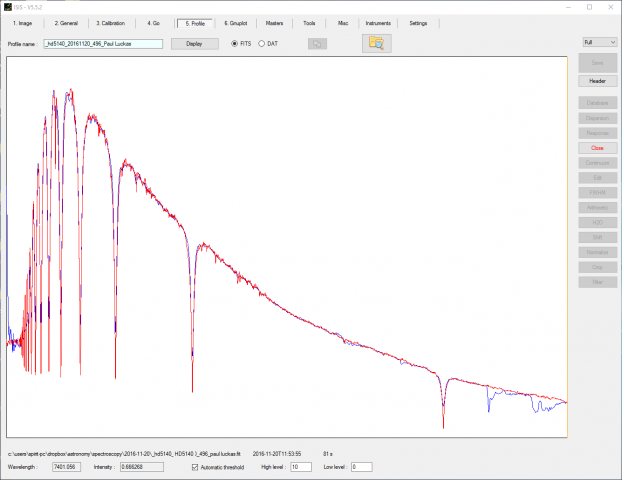Forum Replies Created
-
AuthorPosts
-
 Paul LuckasParticipant
Paul LuckasParticipantHi Robin,
Yes, as far as I can tell the algorithm uses only a master flat and a database reference to create a ‘synthentic’ instrument response profile, which is why I’m at a loss to explain why the results (including those of several cooler stars that I haven’t published) are as good as they are, given that there is presumably no atmospheric correction applied.
The automated smoothing becomes less reliable beyond type-B and type-A stars which may also limit its use. Despite that, it does appear to be yet another cool little feature in ISIS.
Regards,
Paul
 Paul LuckasParticipant
Paul LuckasParticipantHi all,
I’ve been following these posts with some interest, having performed similar tests over the past couple of years while coming to terms with with the ‘black art’ of instrument response correction with both the Alpy and Lhires spectrographs. Most recently (during a spate of bad weather) I’ve been playing around with the response assistant in ISIS. I don’t think the response assistant was developed as a serious replacement for the more rigorous method (as far as I can tell, it can’t correct for atmospheric attenuation) but I’ve been achieving some interesting and remarkably good results despite that, which I’m still trying to get to the bottom of.
The attached profile is a spectrum of HD4150, corrected using the response assistant (blue), with the Miles standard HD31295 and a high quality master flat as the input. The comparison with the Miles standard (red) shows excellent correlation.
A short draft report on the process and some early findings can be found here if of any interest:
http://jazzistentialism.com/blog/wp-content/uploads/2016/11/correcting-instrument-response.pdf

Best wishes,
Paul
-
AuthorPosts
